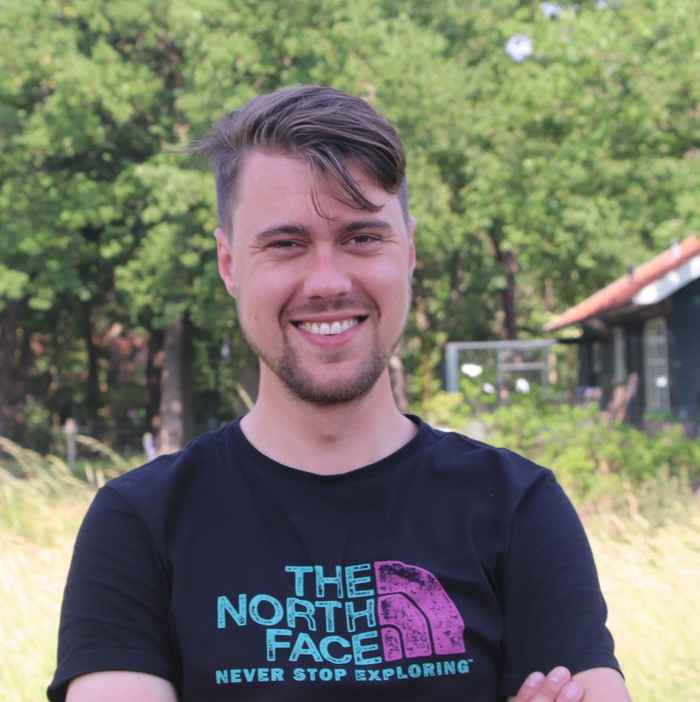Klaas van Leest receives Dick Stufkens Prijs 2021
Holland Research School of Molecular Chemistry (HRSMC) rewards innovative PhD research on catalytic nitrene radical transfer.
15 October 2021
In his thesis, Van Leest describes his studies on cobalt catalysts to achieve selective C‒N and S‒N bond formation via radical-type nitrene transfer. He provides a profound understanding of the underlying mechanisms of these catalysed conversions that are of relevance to the synthesis of medicines and other bioactive molecules.

Selecting the winner from a selection of excellent candidates, the jury for the Dick Stufkens prize 2021 unanimously decided for Klaas van Leest. They were impressed by the quality of his research and applaud his enormous productivity. Not only has Van Leest advanced the catalysis type that was the main subject of his study, he also contributed to studies on a variety of metal catalysts for a range of catalytic processes. While he reported on his PhD research in 9 papers, a further number of 22 other high-quality papers hold his name, and his publications have already been cited over 500 times. According to the jury, Van Leest thus displays an unusual combination of very high productivity with very high-quality, interesting catalysis research, achieved by fostering numerous collaborations within the HRSMC and outside the Netherlands.
Novel approach to improve atom efficiencies
The formation of carbon-nitrogen and heteroatom-nitrogen bonds often is a key step in the synthesis of medicines and other bioactive molecules. The general strategy for these conversions involves functional groups exchange, preorganisation and/or deprotecting steps, all resulting in a reduction of the atom efficiency. Employing catalytic conversions to form C‒N and S‒N bonds could substantially improve this. However, such an approach poses major challenges, especially for chemists searching to employ abundant first-row transition metal ions instead of precious second- or third-row metals. The latter often operate via two-electrons reactions, whilst the first-row metal complexes often exhibit one-electron (radical) reactivity. The particularly challenging tasks for chemists are to control the often nonselective radical processes in the desired transformation; to employ nontrivial spectroscopic tools to study the catalysts and reaction mechanisms; and to perform proper calculations on the intricate open-shell electronic structures.
Highly efficient nitrene radical transfer reactions under mild conditions
Klaas van Leest has managed to overcome all these challenges in a beautiful manner. He employed a redox-active ligand bound to cobalt that can act as an electron reservoir allowing radical nitrene transfer reactions to occur. To succeed in this novel approach, he developed an understanding of the role of the redox-active ligand on the spin-state of the cobalt complex. He also had to develop new reactions for N-group transfer to sp3 hybridized C‒H bonds, and for the selective formation of reactive nitrene radicals on cobalt by using a redox-active ligand. His efforts resulted in highly efficient nitrene radical reactions using such a cobalt complex, performed under mild conditions, in air, in the presence of moisture.
The jury was particularly impressed by Van Leest's investigations on cobalt complexes containing the macrocyclic TAML ligand, where he used a variety of techniques to elucidate the nature of the radical nitrene reactions. Noteworthy further is that the theoretical calculations were not only based on standard DFT calculations but also highly advanced multireference NEVPT2-CASSCF calculations were used. The Co-TAML catalyst is extremely fast and shows a high turnover number. Since the TAML ligand has already been upscaled for catalytic oxidation reactions (as an iron complex), there might be a potential to apply the Co-TAML complex for nitrene conversions on an industrial scale.